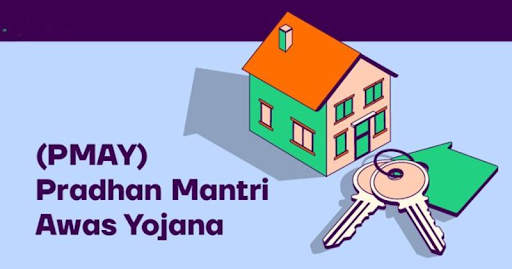The Pradhan Mantri Awas Yojana (PMAY) is a flagship program launched by the Government of India in 2015, aiming to provide affordable housing to economically weaker sections, lower-income groups, and middle-income groups. With the goal of “Housing for All” by 2024, PMAY has become a pivotal initiative for bridging India’s housing gap and making property ownership accessible for millions of people.
Whether you are a first-time homebuyer or seeking financial aid to realize your dream of owning a home, understanding the Pradhan Mantri Awas Yojana eligibility criteria and its application process is vital.
Who Can Benefit from PMAY?
PMAY is not a one-size-fits-all scheme. It is carefully segmented to cater to different socio-economic groups. These groups include:
- Economically Weaker Section (EWS): Individuals or families with an annual income of up to ₹3 lakh.
- Low-Income Group (LIG): Families with an annual income between ₹3 lakh and ₹6 lakh.
- Middle-Income Group (MIG-I): Applicants with an annual income between ₹6 lakh and ₹12 lakh.
- Middle-Income Group (MIG-II): Households with an annual income between ₹12 lakh and ₹18 lakh.
In addition to income-based categories, PMAY mandates that all applicants meet specific prerequisites, such as not owning a pucca (permanent) house in their name or in the name of any family members anywhere in the country. Women, differently-abled individuals, senior citizens, and marginalized groups like Scheduled Castes (SC), Scheduled Tribes (ST), and other backward classes are often given preferential treatment under the scheme.
Importantly, PMAY benefits only those seeking homes in an urban area or within notified towns and cities under the PMAY Urban scheme. On the other hand, its sister initiative, PMAY Gramin, aids in providing housing benefits in rural areas.
Pradhan Mantri Awas Yojana Eligibility Key Highlights
To qualify for PMAY and avail of its benefits, including subsidies on home loans, keep the following eligibility conditions in mind:
- Income Criteria: Your annual household income determines whether you fall under EWS, LIG, MIG-I, or MIG-II categories.
- Family Composition: The scheme defines a family as comprising a husband, wife, and unmarried children. The family should not own a pucca house anywhere in India.
- Citizenship and Residency: Only Indian citizens are eligible to apply.
- Age Limit: While there is no rigid age restriction, applicants must meet the criteria set forth by financial institutions offering loans under PMAY.
- Property Location and Size: The property being purchased should fall within the scheme’s guidelines regarding size and location requirements. Eligible homes must conform to the carpet area limits specified under PMAY.
- Women Ownership: For EWS and LIG categories, preference is given to homes that are solely or jointly owned by women applicants. This is part of the government’s efforts to empower women.
Once you meet these conditions, you become eligible to apply for the scheme and access its benefits, including the Credit Linked Subsidy Scheme (CLSS), which significantly reduces the cost of housing loans taken under PMAY.
How to Apply for PMAY
The application process for PMAY is straightforward and can be completed either offline or online. Here’s a quick guide:
Online PMAY Application Process
- Visit the official website for PMAY.
- Navigate to the “Citizen Assessment” section and choose the category you fall under (e.g., “Benefit Under Other 3 Components” or “Slum Dwellers”).
- Enter your Aadhaar number to validate your identification.
- Complete the application form by filling in details such as your name, contact information, income category, family details, and housing requirements.
- Submit the form and save the acknowledgement slip for future reference.
Offline PMAY Application Process
For offline applications, visit your nearest Common Service Center (CSC) or designated agency authorized by the government. You can fill out the PMAY application form and submit the required documents, including proof of identity, income, and property-related documentation.
Subsidy Benefits for Home Loans Under PMAY
One of the most attractive features of PMAY is the CLSS, which provides interest rate subsidies on housing loans. This subsidy can lower the effective Equated Monthly Installments (EMIs) for beneficiaries across EWS, LIG, and MIG categories.
For instance, those seeking a 20 lakh home loan EMI under PMAY could benefit from reduced interest rates. The subsidy varies based on the applicant’s income category – EWS and LIG beneficiaries are eligible for higher subsidies compared to MIG-I and MIG-II applicants. The interest rate reduction ensures that housing loans are more affordable, helping families better manage their finances while achieving homeownership.
Conclusion
The Pradhan Mantri Awas Yojana has revolutionized housing accessibility in India, creating opportunities for millions to own affordable homes. With clear Pradhan Mantri Awas Yojana eligibility parameters and a user-friendly application process, PMAY remains a valuable tool for promoting inclusive growth and fulfilling the dream of “Housing for All.”
Whether you are applying to buy your first home or plan to take advantage of a 20 lakh home loan EMI, PMAY’s subsidies and benefits can significantly lessen your financial burden. Take the time to evaluate your eligibility, gather the necessary documentation, and complete the application process to secure your future in your dream home.

